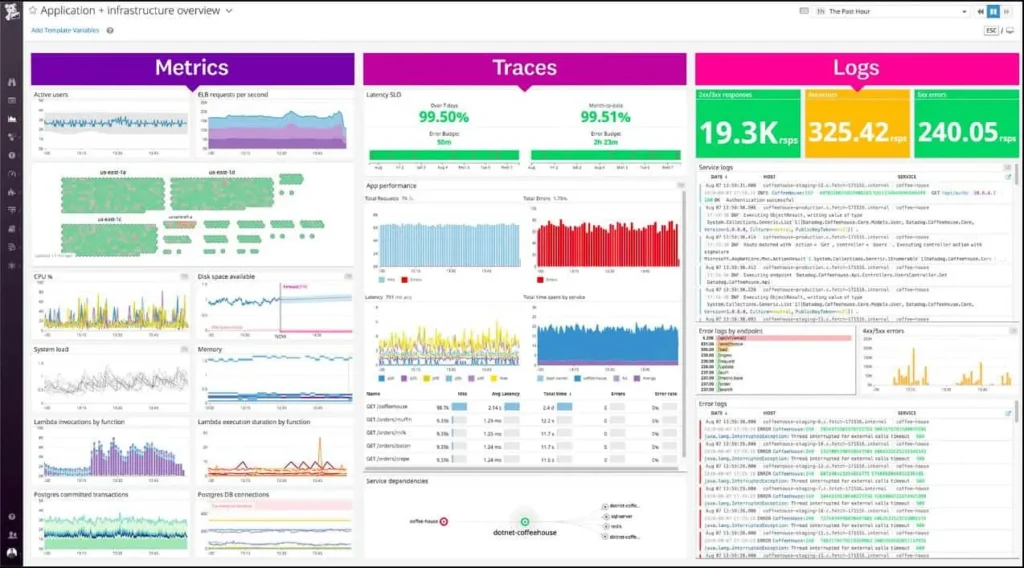
Platform Consulting
With IT Consulting services, we revamp your IT environment to make it go hand in hand with your business needs.

Remote Workers
(Virtual
Desktop Infrastructure)
Enable secure and productive work-from-anywhere experience. Keep data and applications in the datacenter where there is greater control and protection from downtime and data loss

BUSINESS CONTINUITY (Protect your business and preserve data)
Mitigate against the disastrous impacts of data loss due to threats such as ransomware and data corruption physical disaster/events. Archive data to lower long-term storage
cost and preserve data to meet regulatory requirements

VIRTUALIZATION (Run multiple applications on a single server)
Improve application and data availability and benefit from the power and flexibility of multiple servers, but with the space and budget of a single server.

SHARED STORAGE (Single storage pool for multiple servers)
Improve application performance and availability with a reliable, low-cost solution that expands your storage capacity across multiple servers.

HYPERCONVERGED INFASTRUCTURE (Softwaredefined storage for high availability)
Protect your business with a resilient software defined storage solution that keeps your files and data truly protected on multiple servers that can even withstand failure and will keep running even if a server goes off-line.

DATABASE & APPLICATIONS (Host line-of-business apps and data on-site)
Take control of cloud-based apps and data with an on-site solution tuned to run your business applications for better performance and data security, avoiding unexpected subscription costs and downtime from
internet service outages.
Cloud Consulting

Cloud Readiness Assessment
Understand the organization’s business goals, existing IT
infrastructure, and challenges.

Cloud Service Selection
Identify and choose the most suitable cloud services based on
specific requirements.

Cloud Strategy and Roadmap
- Identify and document
the specific business goals and objectives that cloud adoption aims to address. - Assess existing applications for cloud compatibility.

Cloud Migration Planning
Develop a plan for migrating
existing applications and data
to the cloud.

Security and Compliance
Address security concerns and ensure compliance with industry regulations.

Monitoring and Support
Ensure ongoing performance, security, and availability of cloud
services.

Review and Continuous Improvement
Regularly assess the effectiveness of cloud implementations and identify areas for improvement.
Database Consulting
Database consulting involves providing expert advice and services to help organizations effectively manage, optimize, and leverage their database systems

Database Assessment
Conduct a thorough assessment of the client’s existing database infrastructure. Evaluate the performance, scalability, and security of the databases in use.

Database Design and Architecture
Assist in designing and architecting a robust and scalable database structure. Optimize database schema to enhance performance and support future growth.

Database Implementation and Migration
Implement new databases or migrate existing databases to modern platforms. Ensure a smooth transition with minimal downtime and data loss.

Performance Tuning and Patching
Identify and address performance bottlenecks in the database system. Optimize queries, indexes, and configurations to improve overall performance. Plan and execute database upgrades to take advantage of new features and improvements. Implement regular
patching to address security vulnerabilities and bugs.

Security and Compliance
Implement robust security measures to protect sensitive
data. Ensure compliance with industry regulations and
data protection laws.

Backup and Recovery Strategies
Develop and implement reliable backup and recovery strategies. Test backup and recovery processes to ensure data integrity and minimize downtime

High Availability and Disaster Recovery
Implement solutions for high availability to minimize downtime. Develop disaster recovery plans to mitigate the impact of unforeseen events.

Database Monitoring and Maintenance
Set up monitoring tools to track database performance and detect issues early. Establish proactive maintenance routines to optimize database health.

Cloud Database Solutions
Provide expertise in migrating databases to cloud platforms. Optimize databases for cloud environments, ensuring scalability and cost-effectiveness.
ITSM/NMS Consulting

Network Infrastructure Management
Network Infrastructure Management tools are essential
for efficiently monitoring, analyzing, and managing the components of a network.

Server Management
Server management tools are crucial for efficiently monitoring, configuring, and maintaining server
infrastructure. These tools help IT administrators ensure the performance, security, and availability of servers.

Patch Management
Patch management tools are essential for keeping software, operating systems, and applications up to date with the latest security patches and updates. These tools
help organizations ensure that their systems are protected against known vulnerabilities.

Database Management
Database management tools are essential for efficiently designing, organizing, and maintaining databases. These tools provide a user interface for database administrators and developers to perform tasks such as data modeling, querying, and database administration.

Database Access Management
Database Access Management tools, often referred to as Database Access Governance tools, are designed to ensure secure and controlled access to databases. These tools
help organizations manage user access rights, permissions, and activities within database systems, reducing the risk of
unauthorized access and potential security breaches.

Active Directory Auditing & Automation
Active Directory auditing tools are designed to monitor, track, and report on activities and changes that occur within the Active Directory (AD) environment. These tools
help organizations maintain security, compliance, and visibility into user and system activities.

Help Desk and Technical Support
ITSM (IT Service Management) tools are designed to streamline and optimize the delivery and management of IT services within an organization. These tools help IT
teams automate processes, improve service quality, and enhance overall efficiency including Incident management, Problem management, Change management, service
request management, Asset Management, Project Management and SLA
